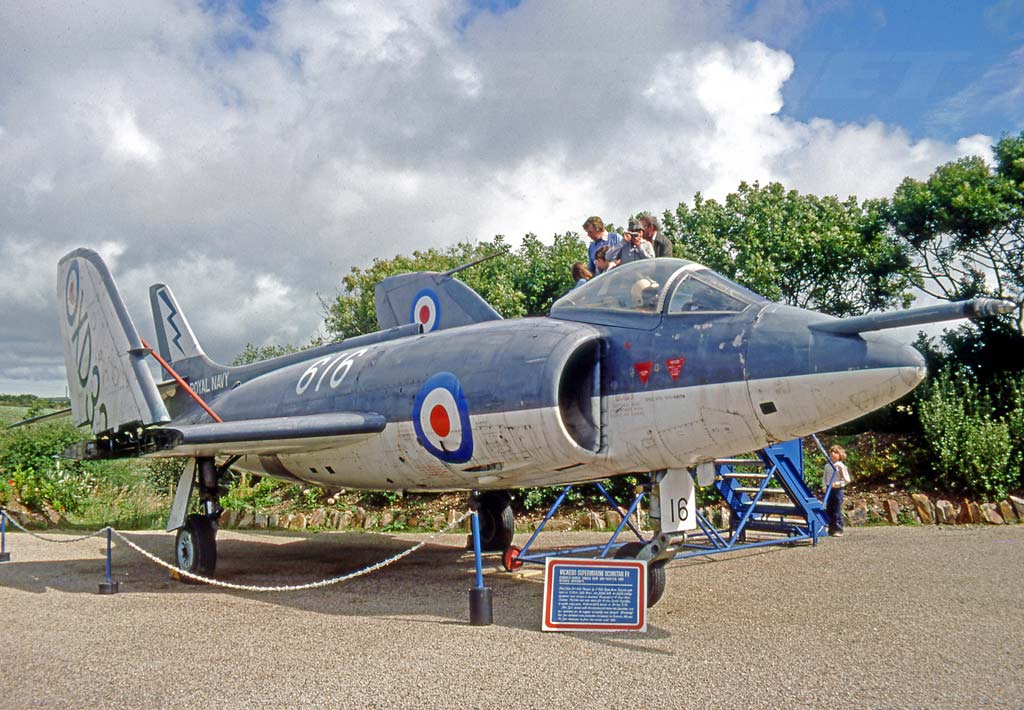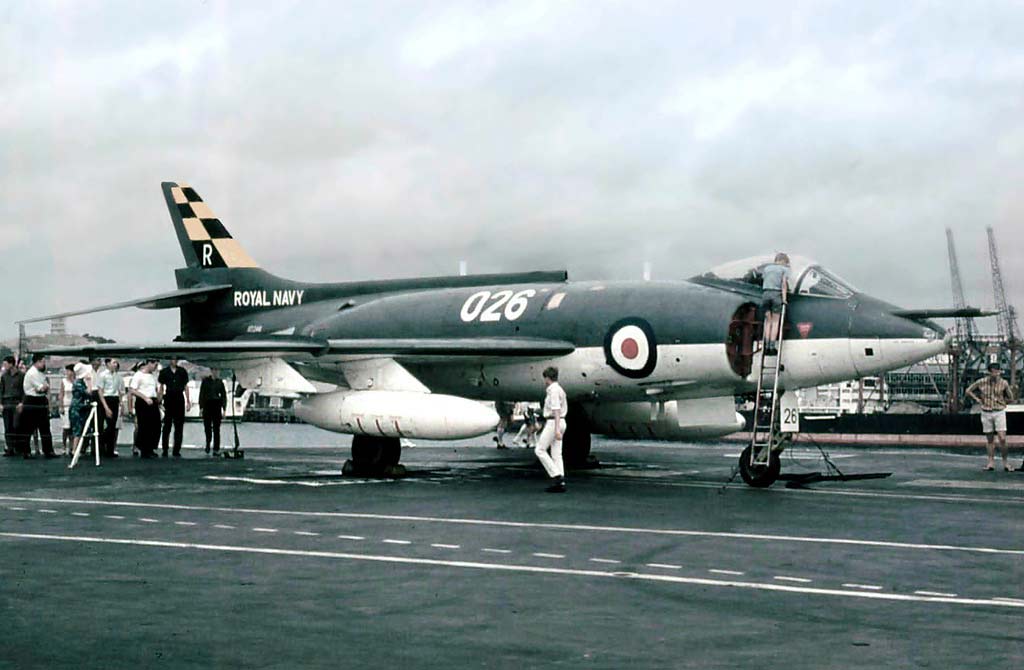The Supermarine Scimitar, a carrier-based naval fighter aircraft, was a formidable presence in mid-20th-century aviation, designed for advanced performance and combat capabilities.
Technical Summary
The Supermarine Scimitar was developed during a crucial period in aviation history. Emerging in the 1950s, it aimed to serve as the Royal Navy’s primary strike aircraft. The need for such an aircraft was driven by the evolving nature of naval warfare and the shift towards more advanced carrier-based aircraft. The program was initiated by the British Admiralty, with its maiden flight occurring on January 19, 1956. The Supermarine Scimitar was colloquially referred to as the “Scimiter,” but it had no official NATO nickname.

Design of the Supermarine Scimitar
The Scimitar was a sleek and robust aircraft, featuring a wingspan of 47 feet (14.33 meters) and a length of 47 feet 6 inches (14.48 meters). Powered by a Rolls-Royce Avon 202 turbojet engine, it produced 11,000 pounds of thrust. Its design incorporated several innovations, including a unique “cranked delta” wing configuration and a retractable nosewheel for improved visibility during carrier landings.
Despite its technological advancements, the Scimitar had some drawbacks. Its complex wing design posed maintenance challenges, and it lacked the agility of contemporary fighter aircraft. However, it brought significant improvements in naval aviation, including better range and payload capacity.
Performance of the Supermarine Scimitar
The Scimitar boasted impressive performance metrics. It could reach a top speed of Mach 0.9 and had a service ceiling of 50,000 feet (15,240 meters). The aircraft had a range of 800 miles (1,287 kilometers) on internal fuel, which could be extended with external drop tanks. While it may not have matched the agility of pure fighters, its speed and firepower made it a formidable strike aircraft.
Compared to its competitors, such as the F9F Panther and A-4 Skyhawk, the Scimitar held its own in terms of speed and range. Its power and versatility made it a valuable asset in naval operations.
Variants of the Supermarine Scimitar
The Supermarine Scimitar had two main variants: the Scimitar F.1 and the Scimitar F.1B. The F.1B featured enhanced radar and avionics systems, improving its role as a fighter-bomber. Both variants shared the same engine and basic design but had slight differences in equipment and capabilities.

Military Use and Combat of the Supermarine Scimitar
The Supermarine Scimitar played a crucial role in the Royal Navy’s strike capabilities during the Cold War era. Armed with four 30mm Aden cannon pods, it could carry a variety of ordnance, including bombs, rockets, and air-to-surface missiles. The Scimitar saw combat during the 1956 Suez Crisis, where it performed strike missions against Egyptian targets.
Throughout its service, the Scimitar conducted numerous missions and operations, contributing to the defense and strategic interests of the United Kingdom. It competed with other naval aircraft, such as the Hawker Sea Hawk, in fulfilling its role. Despite its distinguished service, the Scimitar was eventually phased out in the early 1960s, replaced by the Blackburn Buccaneer.
The Supermarine Scimitar was not exported to other countries, and its military use was limited to the Royal Navy. It is no longer in active service but remains an important part of aviation history.
The Supermarine Scimitar, with its advanced design, impressive performance, and combat service, represented a significant chapter in naval aviation. It met the needs of the Royal Navy during a pivotal era, showcasing British engineering prowess and contributing to the defense of the United Kingdom. While it may have been retired, its legacy endures as a testament to innovation in military aircraft design.
Back to the Fighter Jet section.